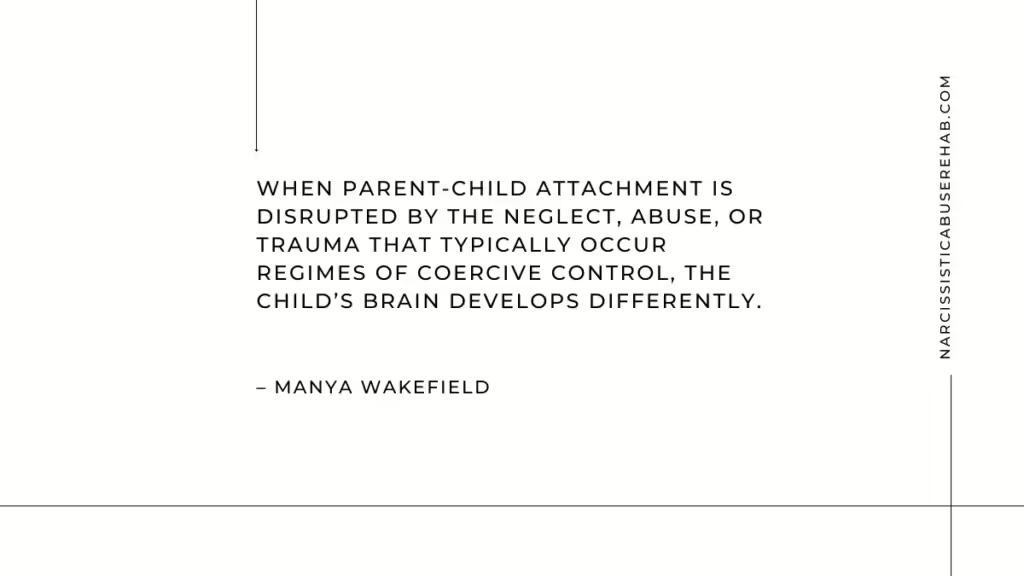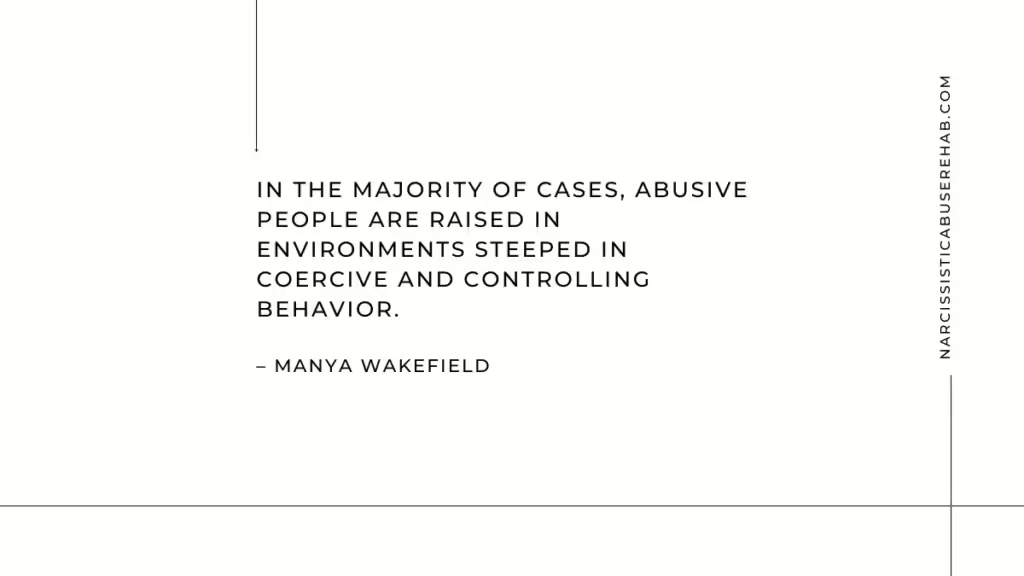In the aftermath of a loved one’s acts of aggression, victim-survivors are often tormented by questions, like “Why? Why do they keep doing this? Why can’t they just stop drinking, stop using drugs? How did I become so trapped, so dependent, so broken?” The role of substance abuse- and dependency in dysfunctional relationships is complex and often rooted in early life trauma–where the seeds of addiction and aggression are sown in attachment disorders.
Michael G. Bricker, a Clinical Supervisor and consultant on “dual recovery” from substance use and mental disorders, emphasizes the deep connection between addiction and attachment disorders—especially for people who have experienced trauma or neglect in childhood.1 He makes the case that there’s much more to addiction than substance use and abuse; he argues that substance dependency is often about trying to fill an inner void created by disrupted or broken relationships in early childhood.2 For people perpetrating or surviving abuse in families where addiction is present, understanding this framework can provide useful insights into the cycle of abuse and dependency that often plays out behind closed doors.3
How Addiction Fuels Intimate Partner- and Family Violence

Addiction and intimate partner violence often go hand in hand.4 This is because substance use can disinhibit aggressive impulses, reduce empathy, and escalate aggressive behavior. Bricker’s work helps to make clear is the deeper why—why do so many controlling people turn to substances in the first place?
The answer lies in attachment—the bond formed in infancy between a child and their primary caregiver.5 When that bond is stable and nurturing, a child learns to feel safe, loved, and connected. But when the attachment is disrupted by the neglect, abuse, or trauma that typically occur regimes of coercive control, the child’s brain develops differently.6 Instead of learning to trust, they learn to survive. Instead of self-soothing, they learn to seek external sources of validation and comfort. As Bricker explains, when those early connections fail, the brain’s mirror neurons—cells that help us understand and empathize with others—don’t develop as they should.7 The result is a person who struggles to form healthy relationships due to chronic feelings of anxiety, loneliness, and fear.
Why Attachment Disorders Can Lead To Substance Dependency

Disordered attachment can lead people to seek relief through substance use, as a way to fill the perceived emotional void. Drugs and alcohol flood the brain with dopamine, temporarily soothing the sense of isolation and pain.8 As Bricker puts it, “loaded feels like love.” 9 For many abusive people, substances become a way to hide an underlying attachment disorder, offering a temporary relief from deep-seated emotional wounds. When drug-induced euphoria inevitably wears off, anger, frustration, and a need for control come to the fore, often in violent ways.10
While it’s true that some abusive people may struggle with emotional regulation due to undiagnosed conditions like maladaptive personality patterns, ADHD, or even autism—the fact remains that most abusive people do not have a personality disorder.11 In the majority of cases, abusive people are raised in environments steeped in coercive and controlling behavior. In gender-based violence, dominance behaviors stem from deeply ingrained attitudes about power and control. In these cases, substances can amplify harm. Alcohol or drugs lower inhibitions and fuel entitlement, making it easier for the belligerent person to justify the abuse they inflict on their partners or families.
Why Some Survivors Develop Substance Dependency

For victim-survivors of abuse, substance use often serves a different purpose but is driven by a similar kind of pain. When you’re living in an environment government by abusive power and control, it’s natural to seek some form of escape. Drugs and alcohol can become a way to numb the emotional- and physical pain, to escape, even if only for a little while.12
Bricker’s insights into attachment disorders help us understand why victim-survivors of abuse may be particularly vulnerable to substance dependence. Like abusers, survivors may have experienced childhoods marked by trauma, neglect, or unstable attachments. This can make them more likely to stay in abusive relationships, seemingly oblivious to the glaring red flags. Anyone who never developed a stable sense of self-worth or security as a child may struggle to leave a partner who offers fluctuating moments of affection, even if those moments are mixed with aggression and cruelty. Especially when society encourages a style of radical forgiveness in the form of perpetually turning the other cheek while never holding the aggressor to account.
For many victim-survivors, substance use also serves as a way to self-soothe in the absence of a healthy support system. As Bricker explains, when our primary caregivers fail to meet our emotional needs as infants, we lose the ability to self-soothe. In adulthood, this often manifests as an overwhelming need for external validation, or as a reliance on substances to quiet the internal turmoil.13 In the context of an abusive relationship, drugs and alcohol can become both a crutch and a trap—offering momentary relief while deepening feelings of isolation and helplessness.
The Impact of Attachment Disorders in Family Systems

In families where both violence and addiction are present, attachment disorders often fuel a vicious cycle. People who abuse are typically unable to form healthy attachments. Instead, they use coercive control to cultivate trauma bonds as a way to keep their partner close. Their need for power, fueled by their own emotional wounds, keeps them stuck in a pattern of abuse and dependence. Substance use and abuse becomes both a cause and a consequence of this dynamic—escalating violence while providing a temporary relief from the emotional pain that drives it.
For victim-survivors, the trauma of coercive control reinforces feelings of worthlessness and fear. If they grew up in environments where love and violence were intertwined, they may unconsciously believe that abuse is part of what it means to be loved. Escape through substance use offers a temporary break from that reality, but ultimately, it keeps them trapped in the cycle of abuse.
Children in these families are especially vulnerable. If they grow up witnessing violence and addiction, their own attachment systems are likely to be damaged. They may struggle to form healthy relationships in adulthood, becoming either perpetrators or victims of abuse themselves. The cycle continues, with each generation carrying the emotional wounds of the last.
Healing and Recovery from Attachment Disorders
Understanding the role of attachment disorders in the cycle of addiction and violence offers a path toward healing. For survivors, it means recognizing that their partner’s addiction and abusive behavior may not be solely about them—it’s about deep-seated wounds that go back much further. This doesn’t excuse the abuse, but it helps to explain why leaving can feel so difficult, and why they may feel drawn back into the relationship even after they’ve left.
Healing from both addiction and abuse requires rebuilding the ability to form healthy attachments. For perpetrators, this means addressing their substance use and working through the underlying emotional wounds that fuel their need for control. For survivors, it means learning to value themselves independently of their partner’s approval and finding new, healthier ways to self-soothe and seek support.
For expert recovery coaching, book a free 15-minute consultation.
References
- Bricker, M.G. (2021). Heroin is My Mother and Booze is My Father – Addiction as an Attachment Disorder. Academia Letters, Article 4070. ↩︎
- Ibid. ↩︎
- Wakefield, M. (2023) The Cycle of Narcissistic Abuse. Narcissistic Abuse Rehab. ↩︎
- Cathy Humphreys, Linda Regan, Dawn River, Ravi K. Thiara, Domestic Violence and Substance Use: Tackling Complexity, The British Journal of Social Work, Volume 35, Issue 8, December 2005, Pages 1303–1320, https://doi.org/10.1093/bjsw/bch212 ↩︎
- Schore, A. N. (2009). Relational Trauma in Infancy Psychoanalytic, Attachment and Neuropsychological Contributions to Parent-Infant Psychotherapy. (1st ed.). Routledge. ↩︎
- Stark, E. (2023) Children of Coercive Control. Oxford University Press. ↩︎
- Bricker. ↩︎
- Söderpalm, B., Ericson, M. (2011). Neurocircuitry Involved in the Development of Alcohol Addiction: The Dopamine System and its Access Points. In: Sommer, W., Spanagel, R. (eds) Behavioral Neurobiology of Alcohol Addiction. Current Topics in Behavioral Neurosciences, vol 13. Springer, Berlin, Heidelberg. ↩︎
- Bricker. ↩︎
- Miller CWT, Hodzic V, Weintraub E. Current Understanding of the Neurobiology of Agitation. West J Emerg Med. 2020 Jul 2;21(4):841-848. doi: 10.5811/westjem.2020.4.45779. PMID: 32726254; PMCID: PMC7390566. ↩︎
- Bancroft, Lundy (2003). Why Does He Do That? : Inside the Minds of Angry and Controlling Men. New York: Berkley Books. ↩︎
- Gorney, B. A. (1989). Domestic violence and chemical dependency: Dual problems, dual interventions. Journal of Psychoactive Drugs, 21(2), 229-238. ↩︎
- Bricker. ↩︎






